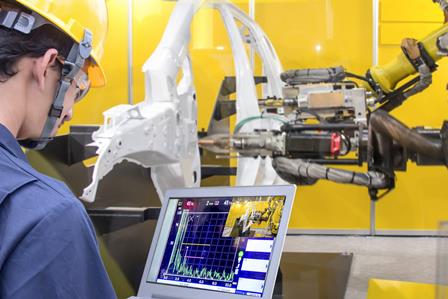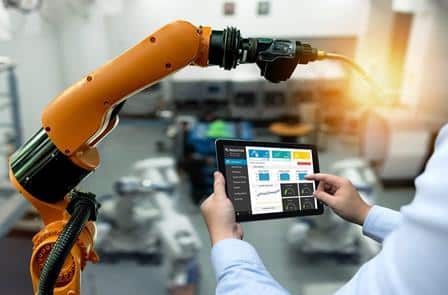Course Overview
This professional development course is designed for engineers and technicians who need practical knowledge in operating and navigating RSLogix 5000 software and associated platforms.
Course Benefit
- You may be eligible to claim CPD points through your local engineering association.
- Receive a Certificate of Completion from EIT.
- Learn from well-known faculty and industry experts from around the globe.
- Flexibility of attending anytime from anywhere, even when you are working full-time.
- Interact with industry experts during the webinars and get the latest updates/announcements on the subject.
- Experience a global learning with students from various backgrounds and experience which is a great networking opportunity.
- Learning practical knowledge vital for operating and navigating the RSLogix 5000 software and associated platforms.
- Understand the basics of control systems and PLC processors and the application of ladder logic programming considering design, maintenance and troubleshooting aspects.
- Get introduced to other programming languages applicable to functional block diagrams, structures text routine and sequential function charts.
PLC Platforms Short Course Details
This course concentrates on Rockwell RSLogix5000 and the platforms using this software. It is designed to give you the tools necessary to confidently create and program projects, focussing on design, implementation, and maintenance. It begins with an explanation of the basics of control systems, why we use them, and the various practical aspects of a Rockwell PLC. Different programming techniques, fault finding, and correcting faults are also covered in detail.
The course is composed of 12 modules, covering the basics of control systems and PLC processors, how to use ladder logic programming, and making design, maintenance and troubleshooting considerations.
Module 1: Basic Understanding of Control Systems and LOGIX5000
- Understanding control systems
- How a PLC works and why we use them
- Drafting basic ladder logic for an RSLogix 5000ladder routine
- Operating and navigating RSLogix 5000 software
Module 2: Getting Started with Project Creation and Modification
- Fundamentals and definition of terms
- Creating and modifying an RSLogix 5000 project
- Relationship between the binary, decimal and hexadecimal numbering systems
- Creating tags and monitoring data in an RSLogix 5000 project
- The difference between tags and addresses
Module 3: Organizing Data and Basic Ladder Logic Design and Rules
- Drafting basic ladder logic for an RSLogix 5000 ladder routine
- Selecting and entering basic ladder logic instructions for an RSLogix 5000 routine
- Organizing data
- Tasks, programs, and routines
- Tag arrays
Module 4: Hardware Identification and Module Selection and Configuration
- Hardware of the different platforms, chassis, controllers, I/O modules and communication modules
- Configuring Controllogix digital I/O modules
- Configuring Controllogix analog I/O modules
Module 5: Ladder Programming Using More Advanced Instruction Types
- Ladder programming using more advanced instruction types
- Using expressions
- Programming a procedures
- Retrieving and setting controller status values with GSV/SSV instructions
- Programming a BTD instruction
Module 6: Using Specialized Instructions and Communication
- Configuring a message instruction
- Programming program control instructions
- Creating user-defined data types
- Using RSlinx for controller to computer communication
Module 7: Documenting and Searching a Project and Sharing Data Over a Network
- Searching for project components
- Documenting a project
- Configuring Logix5000 controllers to share data over an Ethernet/IP network
- Communicating with an I/O Module over an Ethernet/IP network
Module 8: Fault Finding Techniques
- Forcing I/O tags and toggling bits
- Analyzing and troubleshooting a system using a trend chart
- Analyzing and correcting controller faults
- Analyzing and correcting I/O faults
- Chassis and power supply problem
Module 9: Creating an Add-On Instruction and Online Actions
- Entering and editing ladder logic online
- Developing an add-on instruction in a ladder diagram
- Managing RSLogix 5000 project files
Module 10: The Netlinx Philosophy and Earthing Considerations
- The three major industrial networks used by Controllogix
- The network topologies explained
- Installation considerations including earthing and power supplies
Module 11: Firmware Upgrade and Setting Up Communication Modules
- Updating Logix5000 Firmware using Controlflash
- Setting up communication modules
- Introduction to BootP server
Module 12: Introduction to Other Programming Languages
- Introduction and creation of a function block diagram
- Introduction and creation of a structured text routine
- Introduction and creation of a sequential function chart
To obtain a certificate of completion for EIT’s Professional Certificate of Competency, students must achieve a 65% attendance rate at the live, online fortnightly webinars. Detailed summaries/notes can be submitted in lieu of attendance. In addition, students must obtain a mark of 60% in the set assignments which could take the form of written assignments and practical assignments. Students must also obtain a mark of 100% in quizzes. If a student does not achieve the required score, they will be given an opportunity to resubmit the assignment to obtain the required score.
For full current fees in your country go to the drop down filter at the top of this page or visit the Fees page.
Payment Methods
Learn more about payment methods, including payment terms & conditions and additional non-tuition fees.
Dr. Rodney Jacobs is based in the middle regions of South Africa and has been involved as an instructor for the EIT group since 2004. His area of expertise includes all aspects of process control (PLC, SCADA, DCS, Loop tuning), as well as multiple facets of electrical engineering.
Learn about our instructors.
This course may use the following software:
- Studio 5000
Due to ongoing unit and course reviews, software may change from the list provided. Learn more about the Practical Learning at EIT here
You are expected to spend approximately 5-8 hours per week learning the course content. This includes attending fortnightly webinars that run for about 90 minutes to facilitate class discussion and allow you to ask questions. This program has a 65% attendance requirement in the live webinars in order to graduate from the program. If you are unable to attend the live webinars, you have the option of watching the recording of completed webinars and sending a summary of what you have learnt from the webinar to the Learning Support officer. The summaries go towards your attendance requirement for the program.
This program is run online on an intensive part-time basis and has been designed to fit around full-time work. It will take three months to complete.
We understand that sometimes work commitments and personal circumstances can get in the way of your studies, so if at any point you feel that you are struggling with the pace of the course or finding a particular module challenging, you are encouraged to contact your designated Learning Support Officer for assistance.
Registrations are open for our upcoming intakes. Please ensure you book your place at least one week before the start date of the program.
Hear from our students
Choose Your Next Step
Tick the box that applies to you:








